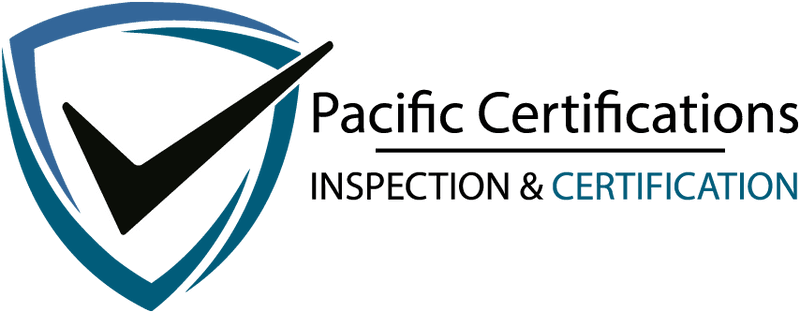
What is EN 13758-2 – Protection against ultraviolet radiation?
EN 13758-2 – Protection against ultraviolet radiation is a European standard that pertains to protection against ultraviolet (UV) radiation in clothing. Specifically, it is part of a series of standards developed by the European Committee for Standardization (CEN) related to clothing designed to provide protection against the harmful effects of solar UV radiation.
This standard establishes a system for classifying and marking clothing items based on their ability to protect the wearer from the harmful effects of UV radiation from the sun. UV radiation can lead to skin damage, including sunburn and an increased risk of skin cancer, so having UV-protective clothing is important, especially for outdoor activities.
Overall, EN 13758-2 outlines criteria for the classification of clothing items into different UV protection categories, and it provides guidelines for labeling these items to inform consumers about their UV protection level. The labeling typically includes a UPF (Ultraviolet Protection Factor) rating, which indicates how effectively the clothing blocks UV radiation. Higher UPF values indicate better UV protection.
What are the requirements for EN 13758-2?
EN 13758-2 – Protection against ultraviolet radiation is part of the European standard for protection against ultraviolet (UV) radiation in clothing, establishes requirements for the classification and marking of apparel based on their UV protective properties. The standard outlines criteria and testing methods to determine the UV protection level of clothing items.
Here are the key requirements and aspects covered by EN 13758-2:
- Classification System: The standard provides a classification system for UV-protective clothing based on their UV protection level. It classifies clothing items into different categories, which are represented by UPF (Ultraviolet Protection Factor) ratings. The UPF rating indicates how effectively the clothing blocks UV radiation. Higher UPF values correspond to better UV protection.
- UV Testing: The standard defines the testing methods that must be used to determine the UPF rating of clothing. This typically involves exposing the material to a UV light source and measuring the amount of UV radiation that passes through the fabric. The UPF rating is calculated based on this measurement.
- UPF Categories: EN 13758-2 specifies four UPF categories, which indicate different levels of UV protection:
- UPF 15 to UPF 24: Good UV protection
- UPF 25 to UPF 39: Very good UV protection
- UPF 40 to UPF 59: Excellent UV protection
- UPF 60 and above: Outstanding UV protection
- Labeling: Clothing items that comply with the standard must be labeled with their UPF rating and appropriate category, allowing consumers to make informed choices about the level of UV protection provided by the garment.
- Marking and Information: In addition to the UPF rating, the standard may also require other information to be included on the garment’s label, such as care instructions and compliance with relevant European Directives.
- Garment Design: While EN 13758-2 primarily focuses on the UV protective properties of the fabric, it does not prescribe specific design requirements for garments. Garment design, style, and features are typically left to the discretion of the manufacturer.
- UV-A and UV-B Protection: The standard may also specify requirements for both UV-A and UV-B protection, as both types of UV radiation can be harmful to the skin. UV-A and UV-B are different parts of the UV spectrum, with varying degrees of penetration into the skin.
It’s important to note that compliance with EN 13758-2 is necessary for clothing manufacturers who wish to market their products as UV-protective in the European market. The standard helps consumers identify clothing items that offer specific levels of UV protection, which is important for individuals who are concerned about sun exposure and its potential health effects on the skin.
What are the benefits of EN 13758-2 – Protection against ultraviolet radiation?
EN 13758-2 deals with protection against ultraviolet (UV) radiation in clothing, offers several benefits for both consumers and manufacturers. Here are the key advantages of this standard:
- Consumer Protection: EN 13758-2 provides consumers with a reliable and standardized way to assess the level of UV protection offered by clothing items. This allows individuals to make informed choices when selecting apparel for outdoor activities, ensuring they can better protect their skin from the harmful effects of UV radiation.
- Skin Health: UV radiation from the sun can lead to various skin-related health issues, including sunburn, premature aging, and an increased risk of skin cancer. Clothing that complies with this standard helps mitigate these risks by providing effective UV protection, reducing the chances of skin damage.
- UV-Protective Clothing Availability: The standard encourages manufacturers to produce UV-protective clothing items, leading to a wider selection of such garments in the market. This availability makes it easier for consumers to find and purchase clothing that meets their UV protection needs.
- Labeling and Transparency: EN 13758-2 mandates clear labeling on UV-protective clothing, including UPF ratings and categories. This transparency allows consumers to quickly identify the level of protection a garment offers, promoting trust in the product and the manufacturer.
- Quality Assurance: Manufacturers who adhere to this standard are more likely to produce high-quality UV-protective clothing that has been rigorously tested. This quality assurance benefits consumers by ensuring that the clothing performs as expected in terms of UV protection.
Also
- International Trade: For manufacturers looking to export UV-protective clothing to European markets, compliance with EN 13758-2 is often a requirement. Meeting this standard opens up opportunities for international trade and access to a large consumer base.
- Health and Safety: By reducing the risk of UV-related skin damage, this standard contributes to overall health and safety for individuals who spend time outdoors, especially in sunny environments. It helps prevent conditions like melanoma and other forms of skin cancer.
- Educational Tool: The standard also serves as an educational tool, raising awareness about the importance of UV protection in clothing and sun safety practices. It encourages individuals to take proactive measures to protect themselves from UV radiation.
- Environmental Considerations: UV-protective clothing can also have environmental benefits by reducing the need for additional sunscreen products that can contain chemicals harmful to aquatic ecosystems when washed off.
Overall, EN 13758-2 plays a crucial role in promoting public health, safety, and informed consumer choices when it comes to UV protection. It ensures that UV-protective clothing is not only readily available but also reliable in its ability to safeguard against the harmful effects of UV radiation from the sun.
Who needs EN 13758-2?
EN 13758-2 – Protection against ultraviolet radiation addresses protection against ultraviolet (UV) radiation in clothing, is relevant to several stakeholders who have an interest in ensuring UV protection and safety.
Here are the primary groups of people who need to consider this standard:
- Clothing Manufacturers: Clothing manufacturers who produce and market apparel designed to offer UV protection need to adhere to EN 13758-2 to ensure that their products meet the required standards. Compliance with the standard helps manufacturers demonstrate the UV protective properties of their clothing items and makes their products more marketable.
- Consumers: Individuals who spend time outdoors, especially in sunny environments, can benefit from clothing that complies with EN 13758-2. Consumers who are concerned about protecting their skin from UV radiation should look for clothing items labeled with UPF ratings and categories to make informed choices about their sun protection clothing.
- Health and Safety Authorities: Regulatory agencies and health authorities may reference or require compliance with EN 13758-2 to ensure that UV-protective clothing in their jurisdiction meets established safety and performance standards. These authorities may also use the standard to educate the public about sun safety.
- Retailers: Retailers who sell clothing, particularly those with outdoor or sun protection-focused product lines, may use EN 13758-2 as a basis for selecting and stocking UV-protective clothing items. They can also provide valuable information to consumers about the UPF ratings and benefits of such clothing.
- Outdoor Enthusiasts: Individuals engaged in outdoor activities like hiking, swimming, sports, gardening, and more can benefit from UV-protective clothing that complies with this standard. This clothing helps protect their skin from sunburn and reduces the risk of UV-related skin damage during outdoor pursuits.
- Parents and Caregivers: Parents and caregivers of children are often concerned about sun protection for their young ones. UV-protective clothing, including swimwear, hats, and clothing for babies and children, can offer an additional layer of protection when spending time outdoors.
- Employers and Organizations: Employers, particularly those in industries where workers are exposed to UV radiation, may consider providing UV-protective clothing as part of their workplace safety measures. Compliance with relevant standards like EN 13758-2 can be essential in such cases.
- Tourism and Hospitality Industry: Resorts, hotels, and travel operators in sunny destinations may offer UV-protective clothing as part of their services or promote sun-safe practices among their guests. Compliance with standards can enhance the quality of their offerings.
Overall, EN 13758-2 is relevant to a broad range of stakeholders who have a vested interest in UV protection and sun safety, including those who manufacture, sell, purchase, or use UV-protective clothing, as well as regulatory bodies and organizations focused on public health and safety.
At last, Pacific Certifications is accredited by ABIS, you need more support with EN 13758-2 – Protection against ultraviolet radiation, please contact us at +91-8595603096 or support@pacificcert.com
Read About : EN ISO 20345:2011-Safety Footwear Standards







